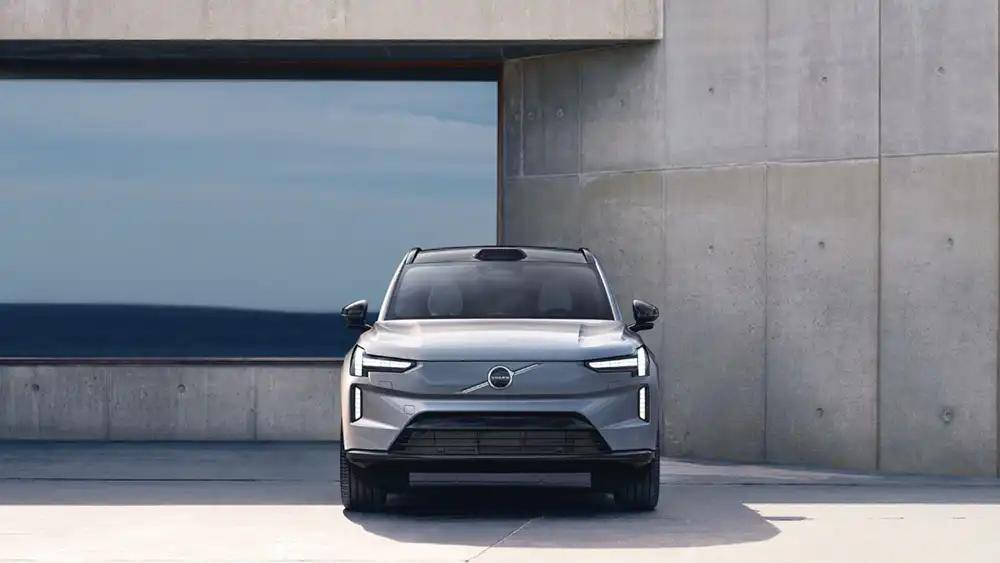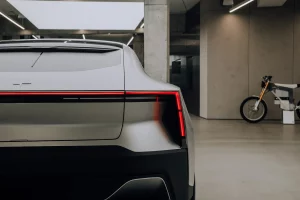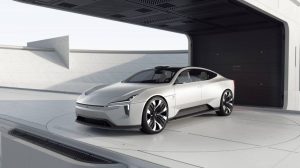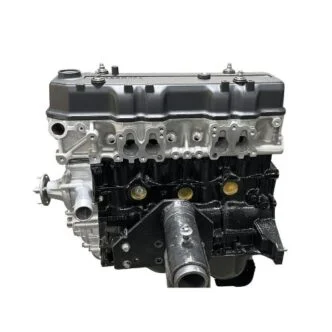Autos & Vehicles
Taking Flight: The Impending Era of Flying Cars in Transportation

Introduction
In the realm of futuristic innovation, the idea of flying cars has long been a tantalizing dream, depicted in countless sci-fi movies and novels. However, what once seemed like a product of imagination is now gradually becoming a tangible reality. With rapid advancements in technology and a growing demand for efficient urban mobility solutions, the concept of flying cars is gaining traction, promising to revolutionize transportation as we know it.
The Need for Transformation
The challenges of modern transportation are becoming increasingly apparent. Urban centers are experiencing congestion woes, with traffic snarls becoming a daily ordeal for millions. Traditional roadways are reaching their saturation points, leading to longer commute times, increased pollution, and heightened frustration among commuters. The quest for solutions to these challenges has led innovators to look skyward. Flying cars, or electric vertical takeoff and landing (eVTOL) vehicles, offer a promising alternative by utilizing the three-dimensional airspace above cities. These vehicles, often likened to small, autonomous aircraft, have the potential to alleviate congestion and redefine urban mobility.
Technological Advancements
Several technological breakthroughs are paving the way for the realization of flying cars. The development of lightweight materials, advanced battery technologies, and improvements in electric propulsion systems are crucial components driving this innovation forward. Moreover, advancements in autonomous driving and artificial intelligence have enabled the creation of sophisticated navigation systems necessary for safe and efficient aerial transportation. Companies at the forefront of this revolution, such as Uber Elevate, Volocopter, and Joby Aviation, are investing heavily in research and development to bring flying cars from concept to commercial viability. Prototypes are undergoing rigorous testing phases, with successful manned and unmanned test flights marking significant milestones in this journey.

Image By:https://impakter.com
Transformative Impact
The integration of flying cars into our transportation infrastructure promises multifaceted benefits.
Alleviating Traffic Congestion
One of the most immediate advantages of flying cars is their ability to bypass ground-level congestion. Commuters could soar above traffic, significantly reducing travel times and minimizing the stress associated with long, gridlocked commutes. This aerial mobility could also unlock previously inaccessible areas, easing accessibility challenges in remote or densely populated regions.
Environmental Impact
Electric-powered flying cars have the potential to be more environmentally friendly than their combustion engine counterparts. By utilizing electric propulsion systems and producing zero emissions during flight, these vehicles could contribute to reducing air pollution in urban areas, fostering cleaner and healthier environments for inhabitants.
Economic Opportunities
The advent of flying cars will not only disrupt transportation but also create new economic opportunities. The development, manufacturing, and maintenance of these vehicles will spur job growth in various sectors. Additionally, aerial mobility services could open avenues for new businesses, such as aerial taxi services and logistics companies, reshaping the job market and generating revenue streams.
Challenges and Considerations
While the prospects of flying cars are promising, several challenges and considerations must be addressed before widespread adoption.
Infrastructure
Establishing the necessary infrastructure to support flying cars is a significant hurdle. This includes the construction of vertiports or skyports—takeoff and landing hubs for these vehicles—as well as the development of air traffic management systems capable of handling increased aerial traffic safely.
Regulation and Safety
Safety regulations for flying cars need to be stringent to ensure the well-being of passengers and the public. Regulatory bodies must address issues like vehicle certification, pilot training (or the lack thereof with autonomous models), air traffic control, and emergency protocols to guarantee safe operations.
Affordability and Accessibility
Initially, flying cars might be prohibitively expensive, limiting their accessibility to a select few. Ensuring affordability and democratizing access to this technology will be crucial for its widespread adoption and societal benefit.
The Road Ahead
The journey toward integrating flying cars into our transportation ecosystem is undoubtedly challenging, but the potential rewards are immense. Collaborative efforts involving governments, industries, and communities are vital to overcoming technical, regulatory, and societal hurdles. The transition won’t happen overnight, but incremental progress is evident. Initial commercial operations are slated to begin in select cities, offering aerial mobility services to early adopters. As technology matures and costs decrease, flying cars could become a commonplace mode of transportation, reshaping our cities and transforming the way we perceive and navigate urban environments.

Conclusion
The concept of flying cars has long captured human imagination, and now, it stands on the brink of reality. The convergence of technological advancements, growing urban challenges, and the need for sustainable transportation solutions has propelled the development of these futuristic vehicles. hile challenges persist, the potential benefits—alleviating congestion, reducing pollution, fostering economic growth, and enhancing mobility—make the pursuit of flying cars an endeavor worth pursuing. As we navigate the complexities and intricacies of integrating this revolutionary mode of transportation, we stand at the precipice of a transformative era in human mobility, where the skies may soon be as accessible as the
Autos & Vehicles
How to Spot the Best Second Hand Probox for Sale in Mombasa

If you’re in the market for a second-hand Toyota Probox in Mombasa, you’re entering one of Kenya’s most vibrant and competitive used-car marketplaces. Japanese vehicles dominate the landscape, accounting for an impressive 94.3% of the 62,495 used cars imported into Kenya in the fiscal year ending June 2023. The growing demand for these cars is rooted in the unmatched reliability and engineering quality associated with Japanese brands.
Among the array of imported vehicles, the Toyota Probox has emerged as a standout choice. Its reputation for durability, fuel efficiency, and low maintenance costs has made it a popular option for a wide range of users, from taxi operators to everyday commuters and businesses requiring reliable transport solutions.

Why the Toyota Probox is a Top Choice in Mombasa
When you’re looking for a second-hand Probox in Mombasa, it’s crucial to understand why this specific model holds such esteem. The Toyota Probox has established a solid reputation for delivering exactly what both personal and business owners seek: dependability, cost-effectiveness, and longevity.
As one of Toyota’s flagship models, the Probox embodies the brand’s longstanding commitment to quality. Its compact design is perfect for navigating narrow city streets, while its spacious interior accommodates various needs, whether for transporting goods or taking the family out.
Here are some standout features that make the Toyota Probox a prized vehicle in East Africa:
- Durability: Toyota is known for its robust construction, ensuring the Probox can withstand daily wear and tear without significant issues.
- Fuel Efficiency: Designed to maximize fuel economy, the Probox is a practical choice for both urban transport and business operations.
- Versatility: The model is adaptable enough to function as both a family car and a commercial vehicle, making it a well-rounded choice for many users.
- Strong Resale Value: Toyota vehicles, including the Probox, maintain their worth exceptionally well in the East African market, making them wise investments.
Steps to Snagging a Reliable Second-Hand Probox in Mombasa
Step 1: Check the Vehicle’s History
The first action you should take when hunting for a second-hand Probox is to investigate its history. Look for:
- Chassis Number (VIN): It should correlate with the auction sheets and any export documentation you receive.
- Auction Sheet or Inspection Report: This document provides crucial information such as mileage, accident history, and overall condition.
- Service Records: A well-kept Japanese vehicle often comes with a detailed maintenance history, which can signal it has been well cared for.
A thorough inspection report will help you make a more informed decision. Reliable exporters, such as UFS Auto, typically provide comprehensive inspection sheets to assist buyers in understanding what they’re investing in.
Step 2: Get Acquainted with Market Pricing
Understanding market prices is vital when considering a second-hand Probox. Generally, you should expect variations based on the model year and condition:
- Older Models (2002–2010): Usually feature lower price points, giving you an economical option.
- Newer Models (2011–2020): These are typically priced higher but come with better features and improved condition.
- Mileage Factors: Lower mileage often translates to a higher resale value and longer lifespan.
Consulting authoritative market platforms can give you insights into competitive pricing, making your buying decision smarter and more effective.
Step 3: Conduct a Thorough Inspection
If you have the opportunity, physically inspecting the vehicle or carefully assessing detailed photos and reports is essential. Key aspects to examine include:
- Engine Condition: Look for cleanliness and signs of leaks.
- Body Condition: Check for scratches, dents, and rust spots.
- Interior: Evaluate the upholstery, dashboard condition, and functionality of electronics.
- Tires and Brakes: Ensuring these components are in good shape can save you future expenses.
Requesting video walkthroughs or pre-shipment inspections can also be beneficial. Trustworthy exporters often provide detailed auction sheets and condition reports to help you gauge the vehicle accurately.
Step 4: Factor in Shipping and Import Costs
Purchasing a second-hand Probox is not just about the sticker price. Be sure to consider:
- Shipping Costs: Understand the fees for transporting the vehicle from Japan to Mombasa.
- Import Duties and Taxes: Research the applicable charges according to Kenyan regulations, as these can significantly affect your total costs.
- Port Handling Fees: These can add to your expenses, so it’s wise to account for them in your budgeting.
Having a clear picture of the overall landed cost prevents unwelcome surprises later. Experienced exporters will typically assist you throughout the shipping process.
Step 5: Work with a Reliable Exporter
Choosing a dependable exporter is critical to ensuring a smooth transaction. Look for these qualities:
- Experience: Choose an exporter with a strong background in shipping vehicles to Africa and Asia.
- Transparent Pricing: An established exporter will provide clear documentation regarding fees and vehicle conditions.
- Excellent Communication: Good customer support is a must for addressing any questions you might have.
With years of experience, UFS Auto is noted for simplifying the process of purchasing a second-hand Probox, providing utmost transparency and support for international clients.
Conclusion
Finding the optimal second-hand Probox for sale in Mombasa becomes significantly easier when you’re informed about the essentials to consider—like verifying the vehicle history, understanding market pricing, and seeking out a trusted exporter. By focusing on these crucial elements, purchasing a Toyota Probox can be a rewarding experience, whether for personal transport or business use.
As a model that benefits from Toyota’s global reputation for durability and reliability, the Probox stands out in terms of functionality and value. Its design accommodates both urban driving and commercial applications seamlessly, making it a smart investment for anyone in need of a reliable vehicle.
For added reassurance, collaborating with established exporters like UFS Auto can streamline the process, providing comprehensive inspection reports and clear communication throughout every step of your purchase, from selection to shipping. With the right information and support, your next Toyota Probox can offer lasting value, dependability, and the satisfaction that this model is renowned for.
Autos & Vehicles
How the Best Japan Car Exporters Ease Global Imports

Importing a vehicle independently can seem thrilling at first. However, it often leads to a maze of auctions, inspection regulations, extensive paperwork, port fees, and unpredictable shipping delays. This complexity is why many buyers in Africa, Asia, the Middle East, and Europe have turned to leading Japan car exporters.
These experts simplify the process, helping you avoid costly errors while the market continues to thrive. In 2023, Japan exported over 5 million passenger vehicles, with the total export value surpassing 15.54 trillion yen, underscoring the strong global demand.
Countries such as Kenya, Tanzania, Uganda, and Sri Lanka enforce stringent inspection protocols through JEVIC, QISJ, EAA, and Intertek. A failed inspection can be financially burdensome. Reliable exporters address this issue by carefully selecting compliant vehicles and arranging necessary inspections before shipment.

Finding the Ideal Vehicle with Ease
For many buyers, the journey begins with browsing vehicle options online. However, navigating through this information without proper guidance can quickly become overwhelming. The top Japan car exporters alleviate this confusion by providing:
- Direct access to authentic auctions
- Verified inventories from trusted dealers
- Search filters tailored to your budget, mileage, and model preferences
- Expert advice on popular vehicles in your region
This guidance is particularly beneficial for first-time importers who might be unfamiliar with auction grading or Japanese inspection documentation.
Clear and Transparent Auction Information
A significant reason why international buyers trust Japan is the straightforwardness of its auctions. However, only the best Japan car exporters ensure that clients receive:
- Authentic auction sheets
- Real-time bidding insights
- Photos from the auction houses themselves
- Accurate grading information, helping you understand the vehicle’s true condition
Working with exporters like UFS Auto allows you to view a car’s complete history. This level of honesty supports informed decision-making, whether you’re importing a family vehicle or assembling a fleet for your dealership.
Streamlined and Accurate Documentation
For many buyers, documentation can pose a substantial challenge. The required paperwork includes items such as the Bill of Lading, Export Certificate, invoices, and deregistration documents, and it can feel endless.
This is precisely where leading Japan car exporters excel. They handle all necessary paperwork, eliminating the burden of figuring out what needs to be submitted and when. This single service can save you weeks of potential errors and frustrating back-and-forth communication.
Whether importing to Kenya, Sri Lanka, the UAE, Tanzania, or Bangladesh, proper documentation is crucial for seamless clearance. Seasoned exporters are already familiar with the specific requirements of each market.
Comprehensive Pre-Shipment Inspections
Another notable advantage of collaborating with the best Japan car exporters is that they provide essential support for pre-shipment inspections. Many countries require these checks to verify a vehicle’s condition and legitimacy before it leaves Japan.
Here’s what each commonly used inspection entails:
- JEVIC: Verifies mileage, vehicle identity, and roadworthiness for nations with strict verification standards.
- QISJ: Concentrates on ensuring quality, safety, and emissions standards, confirming the vehicle meets local regulations.
- EAA: Conducts in-depth pre-export checks, including odometer verification and structural assessments.
- Intertek: Carry out compliance testing, ensuring the vehicle adheres to local import guidelines before it is dispatched.
These inspections are especially critical, as countries like Kenya, Tanzania, Uganda, and Sri Lanka enforce rigorous age limits, emissions standards, and authenticity checks. Any failure in these inspections could result in hefty fines, significant delays, or even having the vehicle returned at your expense.
With proper guidance on inspections, reputable Japan car exporters can help you avoid extra costs and ensure your vehicle is cleared successfully on the first attempt.
Effortless and Well-Organized Shipping
Shipping is often considered one of the most stressful components of the importing process. However, leading Japan car exporters streamline this through various services such as:
- Booking appropriate vessel space
- Consolidating shipments (if you’re purchasing multiple units)
- Managing logistics at the export yard
- Providing timely updates on Estimated Time of Departure (ETD) and Estimated Time of Arrival (ETA)
- Offering complete freight tracking capabilities
Instead of stressing over whether your vehicle is loaded onto the ship, you’ll receive regular updates, giving you peace of mind. Exporters like UFS Auto are renowned for their dependable communication, making the waiting period much more manageable.
Transparent and Straightforward Pricing
Unexpected fees can be one of the most aggravating aspects of importing a vehicle. However, the best Japan car exporters adhere to a clear principle: lay everything out in detail before you finalize your commitment.
This encompasses:
- Auction prices
- FOB (Free On Board) amounts
- Pre-inspection fees
- Freight costs
- Anticipated charges at the destination port
This level of transparency aids both individual buyers and dealership owners in better managing their budgets, minimizing the risk of unpleasant surprises upon the vehicle’s arrival.
The Importance of Choosing the Right Exporter
Throughout the entire process, top Japan car exporters strive to alleviate any stress for their clients. From selecting a vehicle to receiving it at your local port, they ensure that each step is executed with professionalism.
Their blend of transparency, documentation assistance, inspection support, and efficient shipping coordination is the reason why international buyers favor Japanese vehicles over those from other markets.
When partnered with a reputable exporter like UFS Auto, the experience becomes even more pleasurable.
Conclusion
Importing a vehicle doesn’t have to be a complicated ordeal. With the right partner, the entire experience can become straightforward, transparent, and predictable. This is precisely why leading Japan car exporters thrive at helping individuals navigate the importing process confidently, even if it’s their first endeavor.
As demand for Japanese used vehicles continues to rise throughout Africa and Asia, finding a trustworthy exporter is increasingly essential. By working with UFS AUTO, you not only gain a transparent import experience but also ensure that you receive the exact quality you have paid for.
Autos & Vehicles
Toyota 22R Engine: Simplicity Meets Strength

Introduction
The Toyota 22R engine is a legendary powerplant that has earned a reputation for reliability, simplicity, and long-lasting performance. Introduced in the early 1980s, it became a staple in Toyota pickup trucks and 4x4s around the world. Known for its easy maintenance and strong performance, the 22R engine has become a favorite among off-road enthusiasts, mechanics, and everyday drivers alike. This article explores the key features, benefits, common upgrades, maintenance tips, and reasons why the Toyota 22R engine continues to stand the test of time.
History of the Toyota 22R Engine
The 22R engine was introduced as an evolution of the 20R engine series in 1981. Designed for Toyota’s compact trucks and 4×4 vehicles, it was built to provide a balance between power, fuel efficiency, and durability. Over the years, it became well-known for its simple design, making it easy to repair and maintain even for those with basic mechanical knowledge.
Key milestones of the 22R engine include:
- Introduction in the Toyota Pickup and 4Runner models in the 1980s
- Known for a strong 2.4-liter displacement producing around 105 horsepower and 140 lb-ft of torque
- Available in both carbureted and fuel-injected versions in later years
Its combination of strength and simplicity made it a favorite for off-road and heavy-duty applications.
Key Features of the Toyota 22R Engine
The 22R engine has several features that contribute to its legendary status:
1. Inline 4-Cylinder Design
The 22R uses a straight-four layout, which provides simplicity in design and easier maintenance compared to more complex engines. This layout also allows for even weight distribution and reliable performance.
2. Cast Iron Block
The cast iron block ensures durability and resistance to wear, making the engine capable of handling tough conditions without significant degradation over time.
3. Overhead Valve (OHV) Configuration
With its OHV setup, the 22R engine has fewer moving parts, making it easier to repair and maintain while offering reliable power delivery.
4. Carbureted and Fuel-Injected Versions
Early 22R engines used a carburetor for fuel delivery, which was simple and easy to service. Later models introduced electronic fuel injection (EFI), improving fuel efficiency and emissions without sacrificing performance.
5. Cooling System
The engine features a water-cooled system that helps regulate temperature, allowing for consistent performance even under heavy loads or hot climates.
Performance and Reliability
The Toyota 22R engine is known for providing dependable performance in a variety of applications:
1. Power Output
With approximately 105 horsepower and 140 lb-ft of torque, the 22R engine provides sufficient power for daily driving, hauling, and off-road adventures. While it may not match modern engines in raw horsepower, its consistent torque makes it ideal for low-speed, high-load situations.
2. Longevity
Many Toyota 22R engines have been reported to exceed 300,000 miles with proper maintenance. Its simple design and durable materials contribute to this remarkable longevity.
3. Off-Road Capability
Thanks to its torque and reliability, the 22R engine remains a popular choice for off-road enthusiasts who modify trucks and 4Runners for tough terrain.
4. Fuel Efficiency
While not as fuel-efficient as modern engines, the 22R provides reasonable mileage for its era, making it a practical choice for long-distance travel and daily use.
Common Upgrades and Modifications
The Toyota 22R engine has a strong aftermarket support system, making upgrades easy for enthusiasts:
1. Carburetor to EFI Conversion
Upgrading from a carbureted system to fuel injection improves fuel efficiency, throttle response, and emissions while maintaining the engine’s reliability.
2. Performance Exhaust
Installing a performance exhaust system helps the engine breathe better, increasing power output slightly and improving overall sound.
3. High-Flow Air Filters
A high-flow air filter allows more air into the engine, boosting efficiency and performance while keeping dust and debris out.
4. Overdrive or Gear Ratio Changes
For off-road or towing purposes, adjusting gear ratios can improve torque delivery and engine longevity.
5. Reinforced Internals
Some enthusiasts upgrade pistons, rods, or crankshafts to handle higher horsepower or turbocharged setups.
Maintenance Tips for Longevity
Maintaining a Toyota 22R engine is straightforward due to its simple design:
- Regular Oil Changes: Change oil every 3,000 to 5,000 miles to keep the engine lubricated.
- Timing Chain Maintenance: Unlike timing belts, the 22R uses a chain, which typically lasts longer but should still be checked periodically.
- Cooling System Checks: Keep the radiator, hoses, and coolant levels in good condition to prevent overheating.
- Fuel System Care: Clean or replace carburetors or fuel injectors regularly for optimal performance.
- Valve Adjustments: Periodic adjustments ensure proper engine timing and efficient operation.
Following these tips helps keep the engine running smoothly for decades.
Why the Toyota 22R Engine Remains Popular
Despite newer engines with more advanced technology, the 22R engine maintains a strong following:
- Simplicity: Its straightforward design makes it easy for beginners and experienced mechanics to maintain.
- Durability: Built to last, many 22R engines still perform well after decades of use.
- Versatility: Suitable for daily driving, off-road adventures, and light towing.
- Aftermarket Support: Easy to find replacement parts and upgrades.
- Nostalgia: Older Toyota trucks and 4Runners are now classic vehicles, and the 22R engine is a key part of that legacy.
Common Issues and How to Address Them
While reliable, the 22R engine can experience some issues over time:
- Carburetor Problems: Sticking or clogged carburetors can cause poor performance, resolved by cleaning or rebuilding.
- Head Gasket Leaks: Older engines may develop leaks; replacement is straightforward.
- Oil Leaks: Due to aging seals and gaskets, minor leaks may appear and can be fixed with proper maintenance.
- Cooling Issues: Radiator or hose problems may arise; keeping the cooling system in check prevents overheating.
These issues are manageable and often do not require major repairs, keeping maintenance simple.
Conclusion
The Toyota 22R engine is a perfect example of simplicity meeting strength. Its durable construction, reliable performance, and ease of maintenance have made it a favorite among Toyota enthusiasts for decades. From daily driving to off-road adventures, the 22R delivers consistent power and longevity that few engines can match. With proper care, simple upgrades, and regular maintenance, this engine can continue running smoothly for hundreds of thousands of miles. For those seeking a dependable and easy-to-work-on engine, the Toyota 22R remains a timeless choice.
-
Business2 years ago
Cybersecurity Consulting Company SequelNet Provides Critical IT Support Services to Medical Billing Firm, Medical Optimum
-
Business2 years ago
Team Communication Software Transforms Operations at Finance Innovate
-
Business3 years ago
Project Management Tool Transforms Long Island Business
-
Business2 years ago
How Alleviate Poverty Utilized IPPBX’s All-in-One Solution to Transform Lives in New York City
-
health3 years ago
Breast Cancer: The Imperative Role of Mammograms in Screening and Early Detection
-
Sports3 years ago
Unstoppable Collaboration: D.C.’s Citi Open and Silicon Valley Classic Unite to Propel Women’s Tennis to New Heights
-
Art /Entertainment3 years ago
Embracing Renewal: Sizdabedar Celebrations Unite Iranians in New York’s Eisenhower Park
-
Finance3 years ago
The Benefits of Starting a Side Hustle for Financial Freedom






























